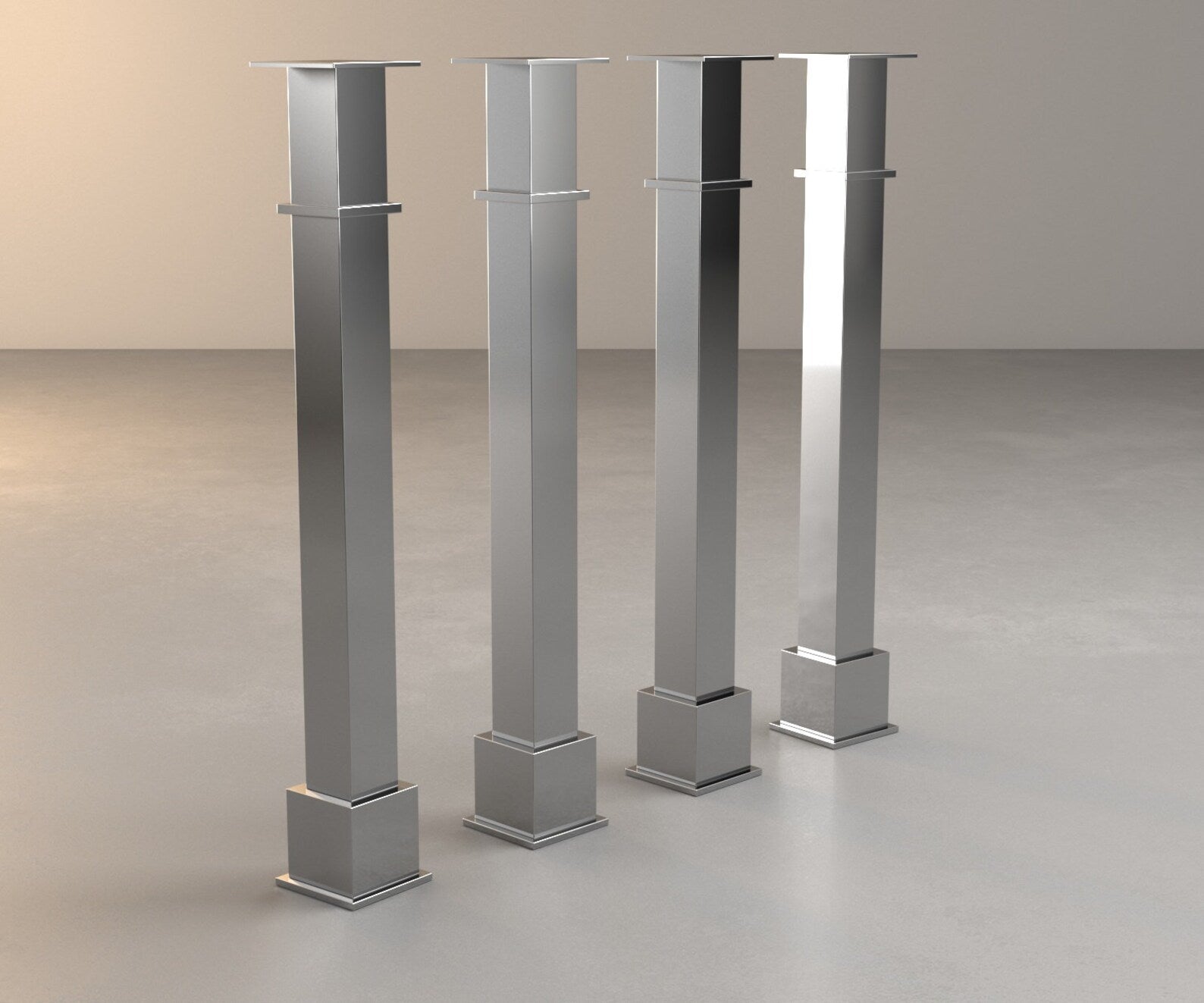Crucial Variables to Take Into Consideration When Choosing Legs For Kitchen Island
Picking the proper legs for a kitchen island includes a careful evaluation of multiple aspects that can significantly influence both capability and aesthetic charm. As we check out these elements, it comes to be clear that each decision can have significant effects for the overall kitchen experience.
Product Options
When picking legs for a cooking area island, understanding the different product alternatives is necessary for attaining both aesthetic charm and architectural honesty (Legs For Kitchen Island). The choice of material dramatically influences not just the durability of the island however additionally its overall design and performance
Metal legs, typically made from stainless steel or wrought iron, contribute a contemporary and industrial feel while ensuring resilience and stability. These materials are immune to put on and can sustain considerable weight, making them suitable for bigger islands.
One more option is engineered products, like MDF or plywood, which can be extra cost-efficient while still supplying a variety of surfaces. They may not provide the exact same level of security as strong wood or steel. Legs For Kitchen Island. Last but not least, products such as acrylic or glass can create a modern look, though they may call for extra support to make certain security.
Inevitably, the choice of material for cooking area island legs ought to straighten with the desired capability and the general motif of the kitchen area.
Design And Style

When taking into consideration design, the shape and surface of the legs are essential. Tapered legs can give a feeling of agility and elegance, while thicker, a lot more durable legs can share toughness and security. In addition, the coating-- be it painted, stained, or natural-- ought to complement the cabinetry and countertop products to develop a unified appearance.
Additionally, the design of the legs can likewise reflect personal preference. Custom-made or ornamental legs, such as those featuring elaborate carvings or one-of-a-kind geometric shapes, can act as prime focus, including personality and character to the kitchen. Ultimately, the appropriate selection will not just improve performance but additionally raise the aesthetic allure, making the cooking area island a standout function of the home.
Height Factors To Consider
Choosing the appropriate elevation for kitchen area island legs is essential, as it straight affects both functionality and convenience. The conventional height for a cooking area island normally varies from 36 to 42 inches, straightening with common countertop heights. A 36-inch elevation is perfect for food prep work and food preparation, enabling comfy usage of kitchen area home appliances and devices. Alternatively, an elevation of 42 inches is typically liked for islands intended for bar seats, fitting taller feceses and supplying a casual eating experience.

It is also important to account for customers' choices and heights. Customizing the height can guarantee a comfy experience for all relative, making the kitchen island an extra enjoyable and functional space.
Weight Assistance
Guaranteeing sufficient weight support for cooking area island legs is essential for both security and performance. The kitchen area island often serves multiple objectives, including food preparation, dining, and extra storage, requiring a robust support structure. When selecting legs, it is crucial to think about the overall weight ability required based upon the island's intended usage and the products that will be put on it.
The option of material for the legs plays a substantial function in their weight-bearing capacities. Solid wood, steel, and sturdy composites usually offer remarkable strength contrasted to lighter materials. Furthermore, the layout of the legs-- whether they are straight, tapered, or have a pedestal type-- can influence their ability to disperse weight efficiently throughout the structure.
Additionally, the leg placement should be strategically prepared to boost security. Legs placed at the edges or with a larger base can go right here much better sustain heavier tons. Always consult the supplier's specs pertaining to lots limitations to make sure that the legs can maintain the desired weight without jeopardizing safety. In recap, picking cooking area island legs with appropriate weight support is essential for developing a functional and secure culinary room.
Installation and Maintenance
Correct installation and maintenance of kitchen island legs are vital for making certain long life and security. This frequently includes protecting the legs to the island base utilizing suitable fasteners, ensuring that the legs are degree and straightened.
When mounted, regular upkeep is essential to protect the honesty and appearance of the legs - Legs For Kitchen Island. For wooden legs, periodic cleansing with a moist towel and application of ideal wood gloss can stop dampness damages and keep their surface. Steel legs might need a mild cleaning service to eliminate grease and gunk, adhered to by a completely dry towel check to avoid corrosion development
In addition, evaluate the legs on a regular basis for signs of wear or damages, such as fractures or loosened joints. Tightening screws or bolts as needed can likewise lengthen the life expectancy of the legs. By adhering to these installation and maintenance practices, home owners can make certain that their cooking area island stays strong and visually appealing for many years to find.
Verdict

Aesthetic comprehensibility is paramount in selecting the style and layout of legs for a cooking area island, as these elements considerably influence the total ambiance of the space. Conical legs can give a feeling of lightness and elegance, while thicker, more durable legs can share strength and security.Selecting the proper height for kitchen area island legs is vital, as it straight influences both functionality and convenience. In summary, selecting cooking area island legs with ample weight support is necessary for producing a secure and functional cooking room.
In verdict, choosing legs for a kitchen island requires cautious factor to consider of various aspects, consisting of product choices, style, elevation, weight support, and installment.
Comments on “Optimize Versatility with Adjustable Legs For Kitchen Island Functions”